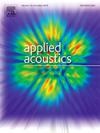Performance prediction and inverse design of cylindrical plate-type acoustic metamaterials based on deep learning
IF 3.4
2区 物理与天体物理
Q1 ACOUSTICS
引用次数: 0
Abstract
Acoustic metamaterials are artificial structures that possess distinctive acoustic characteristics, allowing for modulation effects that are challenging to achieve in the natural world. Nevertheless, the design of acoustic metamaterials is a challenging process due to the intricate relationship between their structural parameters and nonlinear performance. In view of the limitations of conventional design methodologies, which rely on the a priori knowledge of experts and are often hindered by prolonged computation times and the necessity for iterative trials to achieve design objectives, this paper introduces a deep learning-based method for performance prediction and inverse design of Cylindrical Plate-type Acoustic Metamaterials (CPAMs). The creation of a dataset is initiated by generating a large number of samples using a parametric model, with bandgap characteristics calculated through the finite element method. A forward-design deep learning model is then developed, predicting the upper and lower bandgap limits based on input structural parameters. Additionally, an inverse design model is constructed, enabling rapid generation of structural parameters based on desired acoustic performance. The results of the inverse design are validated through simulation and experimentation, confirming the accuracy and reliability of the model. This study demonstrates the potential of deep learning in efficiently designing complex acoustic metamaterials, offering a promising solution for CPAMs development.
求助全文
约1分钟内获得全文
求助全文
来源期刊

Applied Acoustics
物理-声学
CiteScore
7.40
自引率
11.80%
发文量
618
审稿时长
7.5 months
期刊介绍:
Since its launch in 1968, Applied Acoustics has been publishing high quality research papers providing state-of-the-art coverage of research findings for engineers and scientists involved in applications of acoustics in the widest sense.
Applied Acoustics looks not only at recent developments in the understanding of acoustics but also at ways of exploiting that understanding. The Journal aims to encourage the exchange of practical experience through publication and in so doing creates a fund of technological information that can be used for solving related problems. The presentation of information in graphical or tabular form is especially encouraged. If a report of a mathematical development is a necessary part of a paper it is important to ensure that it is there only as an integral part of a practical solution to a problem and is supported by data. Applied Acoustics encourages the exchange of practical experience in the following ways: • Complete Papers • Short Technical Notes • Review Articles; and thereby provides a wealth of technological information that can be used to solve related problems.
Manuscripts that address all fields of applications of acoustics ranging from medicine and NDT to the environment and buildings are welcome.
 求助内容:
求助内容: 应助结果提醒方式:
应助结果提醒方式:


